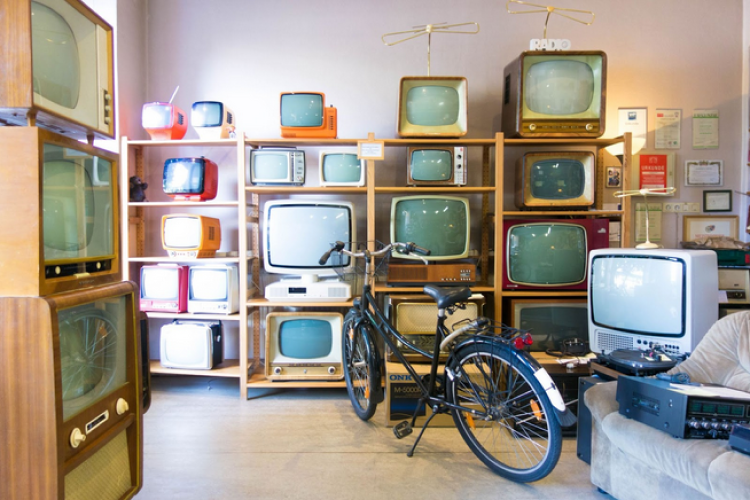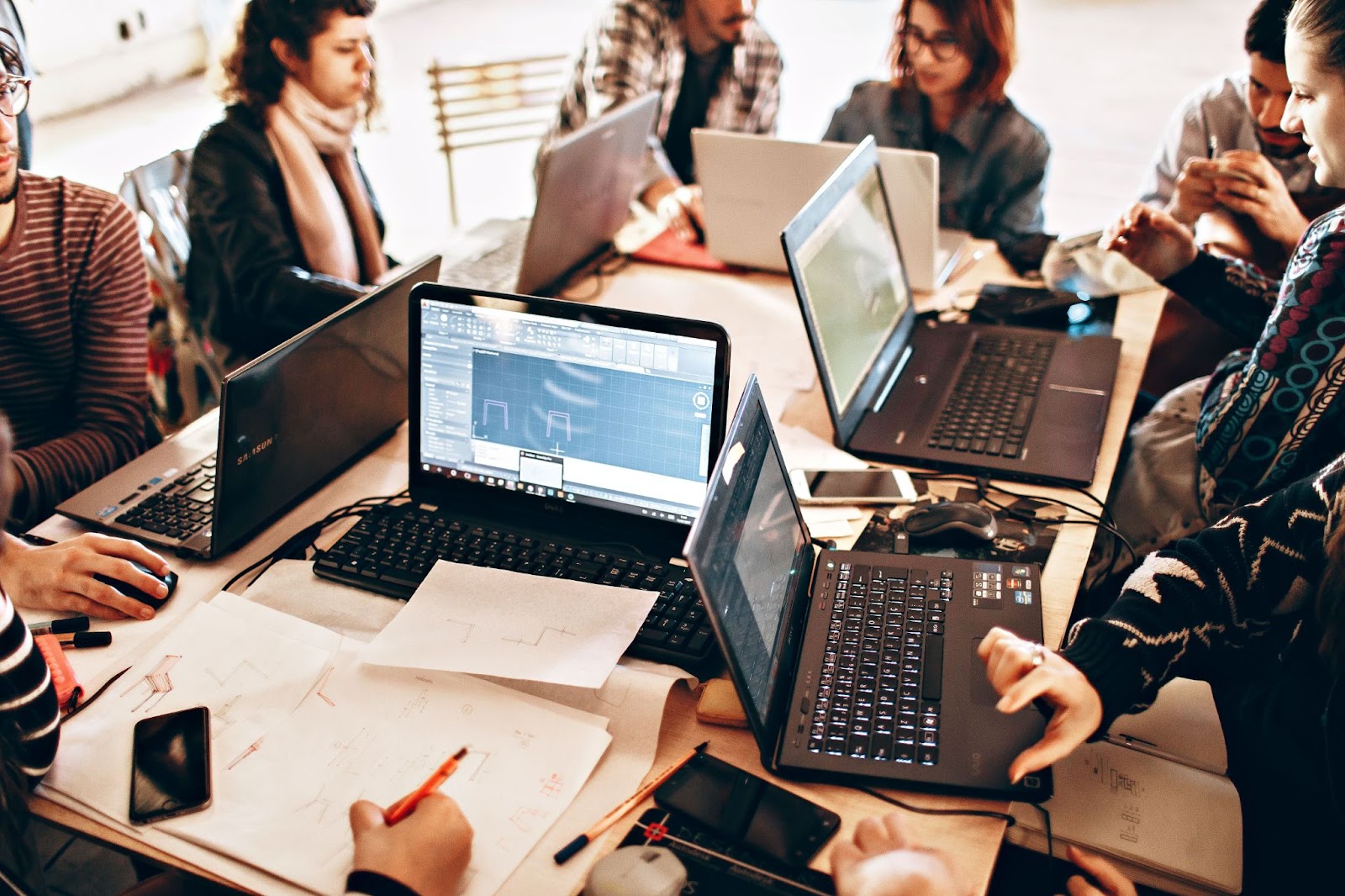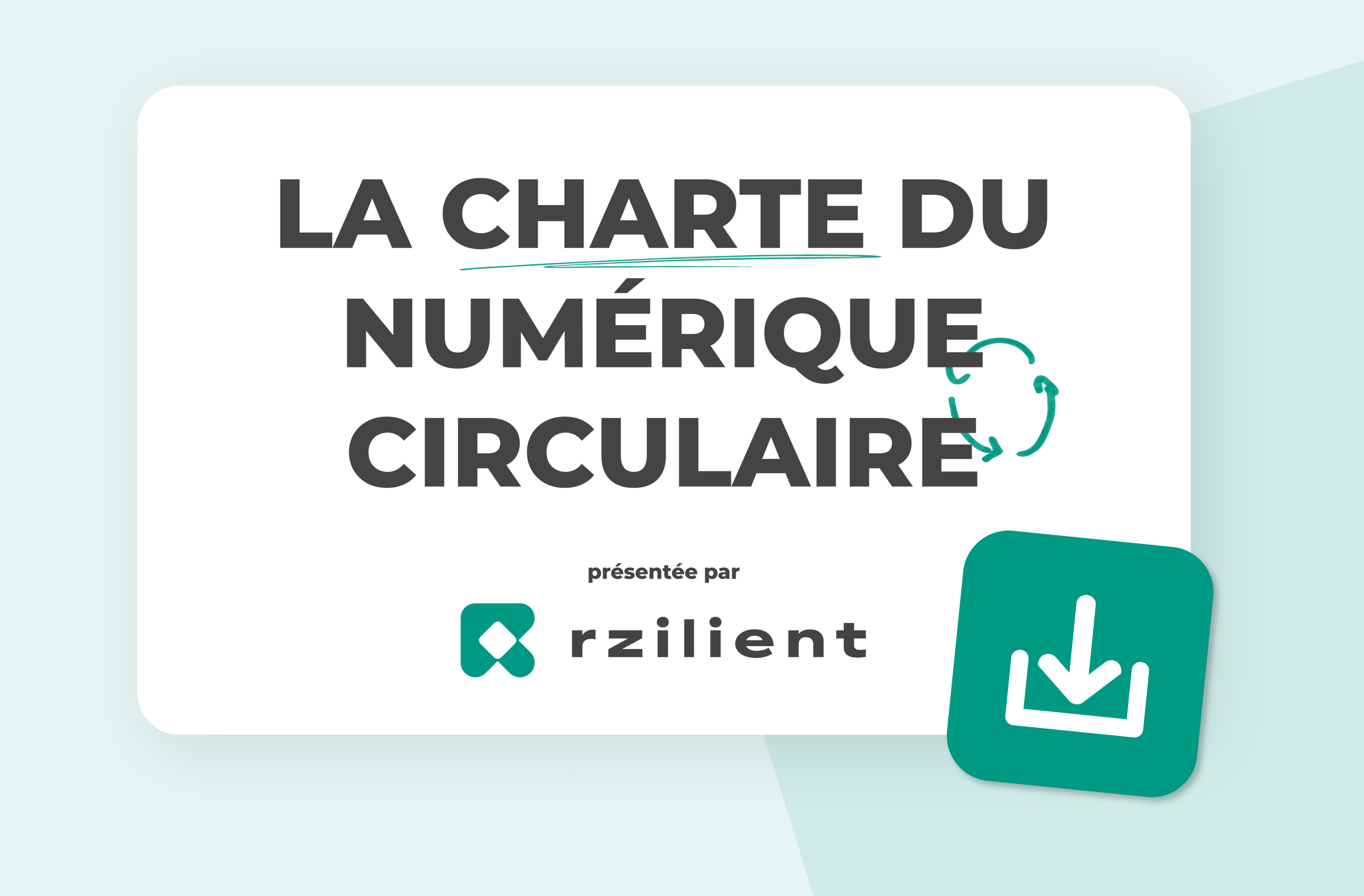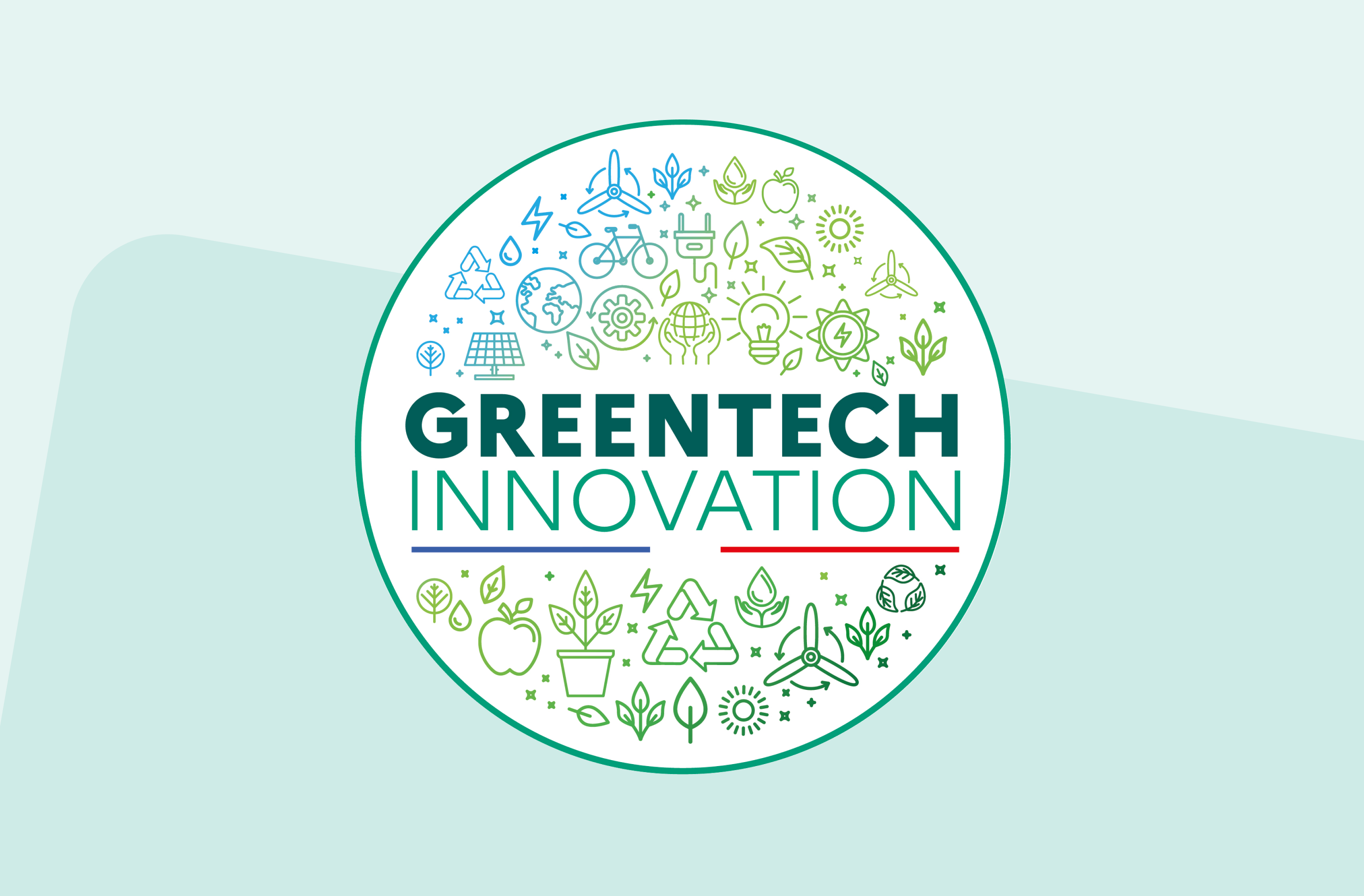The circular economy: how _rzilient works

Discover our all-in-one solution
THEcircular economy is a concept that is being addressed more and more, but what exactly does this model involve? Presented as the ideal solution to reduce excessive consumption and exhaustion of natural resources, the circular economy is based on a pattern similar to A loop, far from the traditional linear model.
Ecodesign, revalorization, recovery, reuse and recycling are the key words of this approach.
But as the press release from the French Association of Enterprises for the Environment (EpE) dated June 29, 2021 points out, The brakes are numerous in the massive development of the circular economic model.
These are the obstacles that justify the fact that our global model is circular at only 8.6% based on the 2020 Circle Economy report.
how operates the circular economy? What is Its objective ? Why integrate circularity into your business? Is this approach part of The ecological transition ? Rzilient gives you some ideas for thought and presents its circular economy model in the digital sector.
What is the circular economy?
Simple definition of the circular model
What is the circular economy? Here is a simple definition of this virtuous model:
The circular economy is An alternative to the dominant economic model, which is based onlinear use of natural resources, from their extraction to the production of waste.
According to ADEME, the circular economy is an economic system of exchange and production which seeks, at all stages of the product life cycle, to increase the efficiency of the use of resources and to reduce the impact on the environment, without forgetting the well-being of individuals.
This model seeks above all to reduce waste and environmental impact to limit the carbon footprint of the company but also of users.
If the circular economy were to develop for the most part by 2025, there could be a 83% reduction in greenhouse gas emissions produced in Europe. Likewise, the consumption of primary resources could drop by 52% according to the Ellen MacArthur Foundation (in 2015).
The values and the 7 pillars of circularity
How does the circular economy model work?
The value loop is created on 3 domains main ones:
- Theoffering economic actors;
- The Demand and behavior consumers;
- The managerial rubbish.
It is these 3 poles that allow prevention and effective management of resources, provided that we follow the 7 pillars of the circular economy.
These 7 pillars are divided in the following order of optimization:
- lsustainable procurement : it concerns the way in which resources are exploited and extracted.
- lEcodesign : from the design of a service or a good, the entire life cycle (LCA) is taken into account with a minimization of environmental impacts.
- lindustrial and territorial ecology or industrial symbiosis : it is a mode of organization between companies through exchanges of flows, or the pooling of needs, which aims to optimize resources in a territory. The systemic approach is based on the functioning of natural ecosystems.
- lThe economy of functionality : possession is abandoned in favor of use; it is the services linked to the products that are sold and not the products themselves.
- The responsible consumption : the aim is to lead the buyer to make a product choice by taking into account the environmental impacts at all stages of the life cycle of the product or service.
- lExtending the duration of use : favor repair, sale, second-hand donation or second-hand purchase but also reuse or reuse.
- The retraining : the last step in the chain to reuse raw materials from waste.
The intrinsic values of the circular economy are therefore the preservation of the environment thanks to better management of raw resources and the desire for reuse rather than the creation of new products.

The circular economy: the future of ecological transition?
Transformer The waste of some into the resources of others seems to be the perfect solution to stay within the 1.5° trajectory recommended by the Paris Climate Agreement.
The circularity model attempts to respond to the challenges of ecological redirection; a concept that underlies the urgency of the situation and the need to quickly align with the planetary boundaries; more than the simple ecological transition or the concept of sustainable development.
Extending the lifespan of products, combined with eco-design, would allow a reduction of 1.70 Gt in GHG emissions as well as the preservation of 3.95 Gt of raw materials. However, Obstacles and brakes exist.
Obstacles to its widespread development
The obstacles to the development of this economy are numerous:
- The variable quality and quantity secondary materials;
- The geographic dispersion deposits of these secondary materials;
- The lack of access to information ;
- Thelack of incentive regulations ;
- The psychological barriers and fears.
Investments in the circular economy can also be Uncertain because there are specific risks associated with this approach, which are sometimes even superiors.
Some psychological barriers remain. For many, the circular economy is an uncertain economic model. They don't dare to engage in it. This is in particular the result of a insufficient access to data.
Thanks to the Data and Statistical Studies Service (SDES), which measured the evolution of 11 indicators covering the 7 pillars of the circular economy, you can see the points that are working, those that are being improved, and the others that are stagnant.
The 2 clusters that are approaching the goals of the circular economy the most quickly are:
- The productivity materials;
- Theaccompanying, by ADEME, companies on the functional economy.
The 2 that are stagnating the most and that are far from achieving the goals are those that concern:
- The household expenses devoted to maintenance and repair;
- The landfilled waste.
The last 2 seem to be the result of psychological barriers. Consumers probably think that it is easier, faster, and cheaper to throw away and buy back than to try to maintain and repair a product.
Create partnerships Is a factor of acceleration and development of the circular economy in the territories thanks to the diversity of actors brought together. The whole challenge is to coordinate and bring closer independent economic groups to benefit additional skills or resources.

The circular economy in the digital sector, the Rzilient approach
The digital carbon footprint is no longer a secret, the sector pollutes a lot. The best way to reduce environmental impact and avoid electronic waste is still the reconditioning of equipment since recycling is difficult because of the components that are complicated to extract individually.
Rzilient aims to be fully part of a circular economy approach in order to introduce more circularity in the digital sector.
The objectives of this circular strategy
If we take up the pillars of the circular economy mentioned above, we can see that Rzilient is working to have a circular approach on 6 poles of the loop:
- The consumer accountability and consumers on the impacts;
- Thelengthening the duration of the life of digital devices;
- Theeconomy of functionality ;
- Thesustainable procurement ;
- The recycling and reconditioning ;
- lEcodesign.
In addition to acting to reduce the environmental impacts of the digital sector, rayilient's missions meet the challenges of corporate digital responsibility (RNE) and sobriety.
Rzilient, with its position ofprivileged interlocutor in supporting companies towards responsible digital technology, seeks to eliminate - in the long term - the waste emitted by the digital sector.
To do this, they rely on:
- The reuse ;
- The reparation ;
- The repackaging ;
- The refurbishment.

The pillars of Rzilient's circular economy
Extending the duration of use
To fight against the digital overconsumption and Planned obsolescence, Rzilient focuses on reconditioning andlengthening of use computer hardware.
Plus the duration of use Computer hardware is long, less sound environmental impact linked to its manufacture and end of life is significant. It is a first step to succeed in the digital ecological transition in companies.
From purchase to recycling or reconditioning, including support, Rzilient takes care of all the steps, even on computer equipment that the company would not have placed.
This extension of the duration is made possible by accountability and awareness on the subject. Because buying before repairing remains the main psychological barrier to overcome.
Selling the service rather than the product
Thanks to its numerous partners and its services, rayilent is an ideal alternative to reduce computer waste. No need to buy a new iT fleet, it is now possible to rent or lease. La Management becomes eco-responsible thanks to integrated and tailor-made services.
Rzilient then sells a service more than an equipment : awareness-raising, the implementation of responsible digital technology, maintenance and repair. The functional approach takes precedence over ownership since you pay for the performance of the service.
If we follow the typology of circular business models, the company follows the pattern of”Product as a service”.
Les Electronic waste is falling drastically thanks to this model as relationships with customers and suppliers increase.
Rethinking the business model makes it possible to add The common value to the services sold and therefore to profoundly transform the linear diagram often associated with digital technology.
A circular approach for continuous improvement
Rzilient also contributes at its level to create new jobs thanks to the posts of maintenance, of reparation and valorization computer hardware at the end of its life.
Likewise, the supply is made in a sustainable manner with approved reconditioners.
With the implementation of a circular diagram, rzilient seeks to highlight:
- The digital sobriety ;
- The corporate digital responsibility (RNE) ;
- the importance of use before possession.
The company is in a continuous improvement process. To push this economic model of circularity further, she is well aware that efforts must be joint With all The actors in the sector.
LHonesty and transparency embody the foundations of a circular economy and outline the company's line of conduct. However, even if the company is very proud of the partnerships established and of the awareness of the importance of using refurbished equipment; the most important thing remains awareness-raising and the extension of life span hardware.






